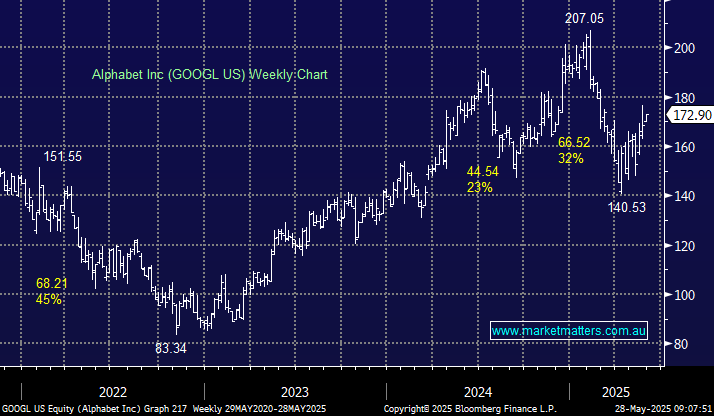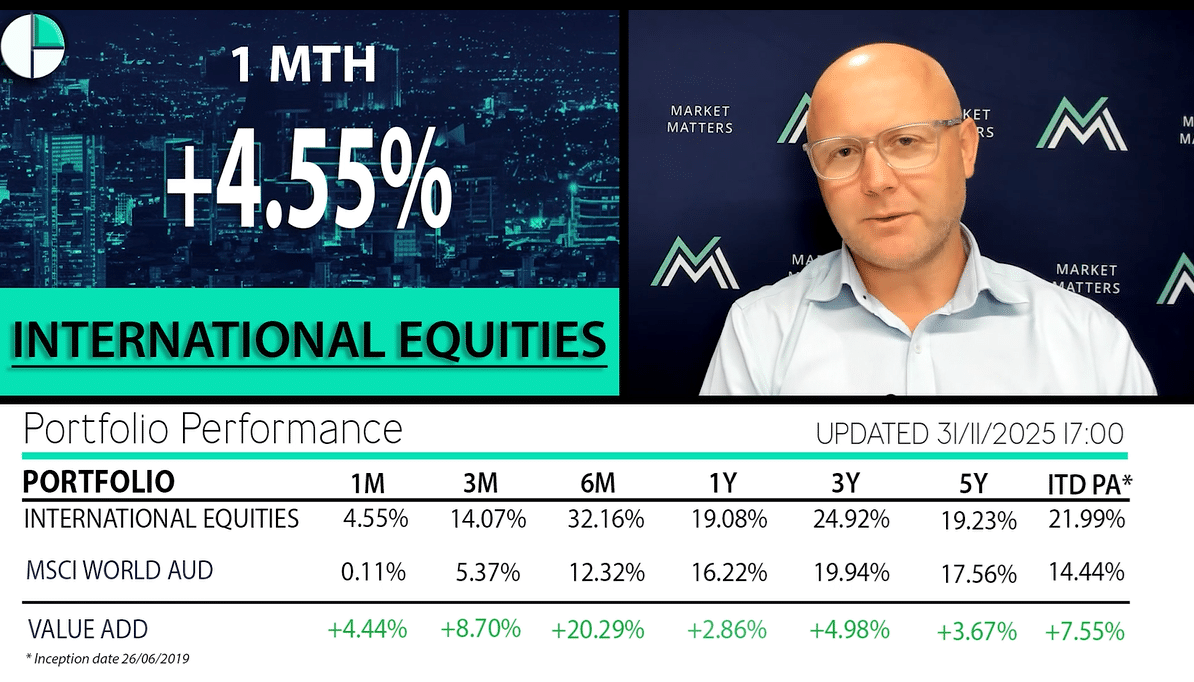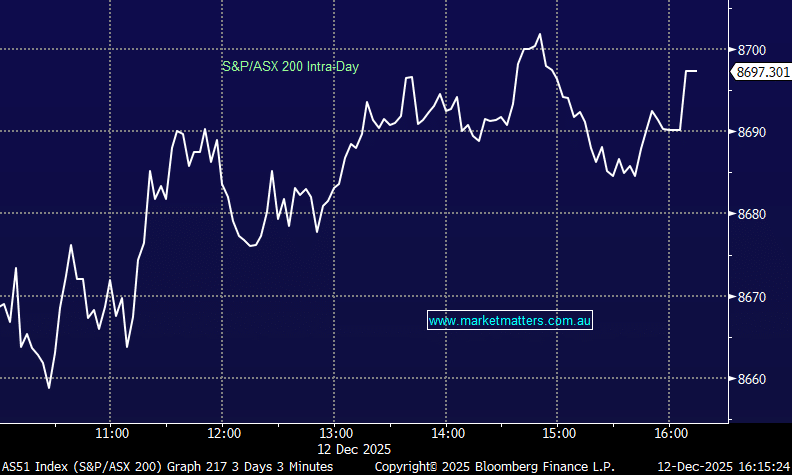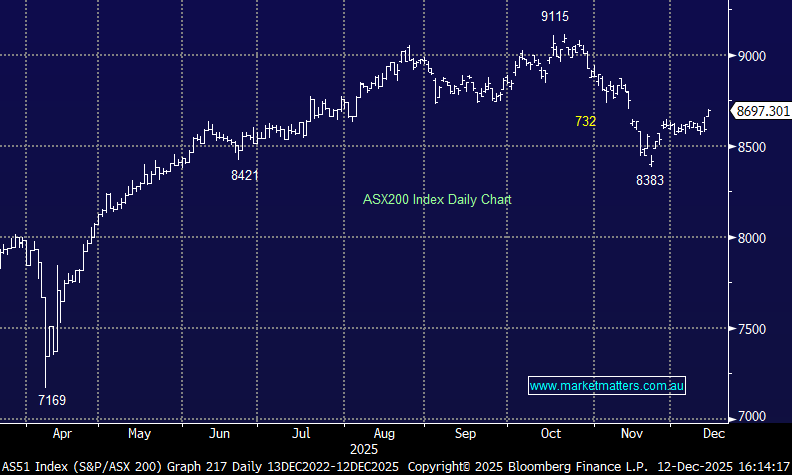The concern around Google is how newer generative AI companies will impact their share of search, and the lucrative revenue that comes with it. In last week’s annual developers conference (I/O), they did a very good job of convincing MM (and hopefully others) that they are at the forefront of this revolution, by integrating generative AI and large language models (LLMs) into its search products. This transformation is significant and affects how results are displayed, how queries are interpreted, and how users interact with search. So instead of getting a list of links that best match the search criteria, users get an AI-generated summary at the top of the results page, answering the query in natural language.
To retain dominance, Google are investing heavily in the space. This year’s Capex bill is planned to be $US75bn, up from $US52.5bn spent in 2024, with the majority of this investment directed toward expanding AI and cloud infrastructure, including data centre’s and custom AI chips like the Tensor Processing Units (TPUs). This level of investment is clearly significant, and their ability to spend more than most puts them in a great position to maintain leadership in AI development and deployment.
The obvious question is how they’ll make money from all this, and there are multiple streams to this answer.
- Google is integrating ads (paid) directly into AI generated answers (they are labelled as sponsored). This keeps the core search ads business alive, and data from their largest markets (India & US) show that AI Overviews are actually driving a 10% increase in search queries. Better search = more use which is important because they are positioned where traditionally the top paid advertiser would be located.
- More interesting is the tools being provided to generate ad creatives, (text, images and video), automatically optimise campaigns and personalise messages based on audience signals – in other words, creating better advertising content in an easier/cheaper way, and making it more effective.
- The Google Cloud Platform (GCP) lets other companies build and train their own models, and businesses can improve productivity through AI features on docs, spreadsheets and so on.
- There are also options for consumers to tap into more advanced models, competing with Microsoft Co-Pilot, paying a monthly fee.
- Further, they are embedding their AI capability into devices, be it, phones, glasses or cameras, while they’ve also developed tools for YouTube video creation, to make it easy for content creators to create.
Ultimately, there is a lot going on here, however, the main point to get across is that instead of this misconception that AI is a big threat to Google, we see it as a large opportunity, which they’re embracing with their deep pockets.


















